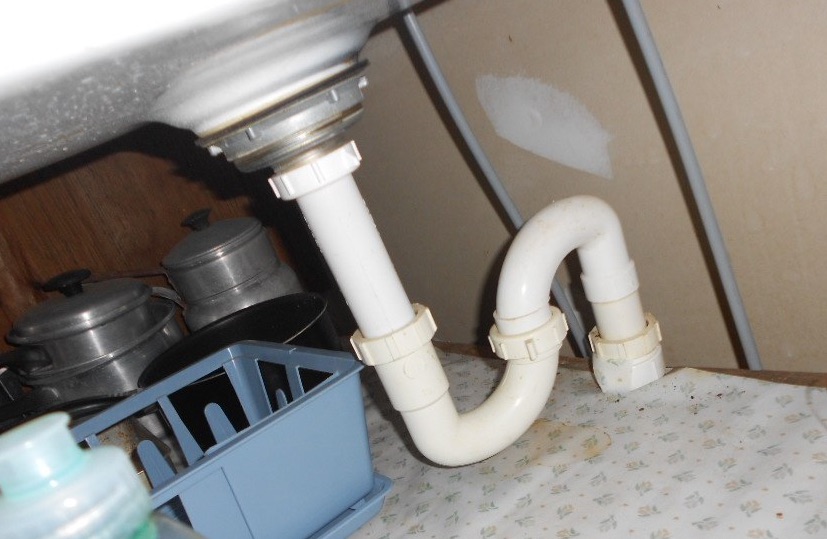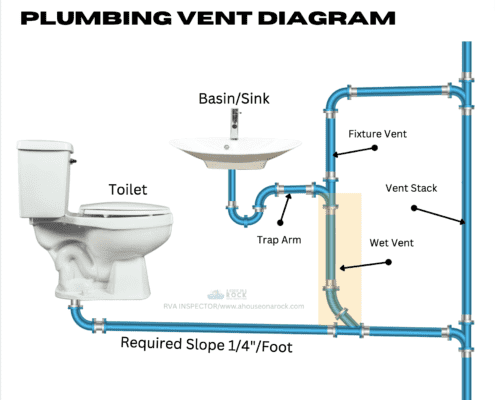Here further down you might get lots of helpful expertise regarding Essential Plumbing Vent Pipes: Understanding Their Role.

Correct air flow in pipes systems is usually forgotten, yet it is critical for preserving the performance and security of your home's plumbing. Air flow assists control atmospheric pressure, stop the accumulation of hazardous gases, and make certain the efficient elimination of waste. In this guide, we will certainly check out the relevance of correct pipes air flow, exactly how it works, and the benefits it brings to your plumbing system.
Understanding Air Flow in Pipes
Ventilation in pipes describes the network of pipelines that enable air to move via the drain system. These vents serve several purposes, consisting of controling air pressure within the pipes, preventing sewage system gases from going into the home, and helping in the smooth circulation of wastewater.
How Ventilation Works in Plumbing Equipments
Air Pressure Guideline
Appropriate ventilation preserves balanced atmospheric pressure within the plumbing system. When water moves through pipes, it displaces air. Without appropriate air flow, this displacement can create unfavorable pressure, causing slow down drains pipes or siphoning of water from catches, which can trigger undesirable smells to seep into the home.
Avoiding Drain Gas Accumulation
One of one of the most vital features of plumbing vents is to stop sewer gases, such as methane and hydrogen sulfide, from collecting within the home. These gases can posture significant wellness threats and are extremely combustible. Vent pipelines enable these gases to escape safely outside.
Assisting in Waste Removal
Air flow helps in the efficient elimination of wastewater by protecting against airlocks in the drain system. When air can flow easily with the vents, it permits water and waste to flow smoothly through the pipelines, minimizing the risk of obstructions and back-ups.
Sorts Of Plumbing Vents
Main Stack Vent
The main stack air vent, likewise referred to as the air vent stack, is the key air vent in a pipes system. It extends from the major drain line up via the roof, enabling gases to escape and fresh air to get in the system.
Branch Vent
Branch vents attach to the main pile vent and offer private fixtures, such as sinks, toilets, and showers. These vents make sure that each component has sufficient air flow to work correctly.
Air Admittance Shutoff (AAV).
An Air Admission Shutoff (AAV) is a one-way valve that enables air to get in the pipes system without the requirement for a conventional vent pipe prolonging with the roof. AAVs are commonly made use of in remodellings or areas where mounting a standard vent is not practical.
Indicators of Poor Ventilation in Plumbing.
Slow Draining Fixtures.
If your sinks, bathtubs, or toilets are draining gradually, it could be a sign of inadequate ventilation. Poor air circulation can develop a vacuum effect, making it hard for water to drain pipes appropriately.
Gurgling Sounds.
Gurgling noises coming from drains are frequently an outcome of air being drawn with water catches as a result of negative pressure in the pipes. This is a clear sign of inadequate ventilation.
Unpleasant Smells.
Drain odors inside your home are a warning that your plumbing system is not correctly aerated. This could suggest that drain gases are not being sufficiently vented outside, causing potentially hazardous conditions.
Usual Ventilation Errors.
Poor Vent Sizing.
Making use of undersized vent pipes can result in inadequate air circulation and pressure imbalances in the system. It's essential to make use of vents that meet the details needs of your pipes system.
Improper Vent Placement.
Putting vents as well far from the fixtures they offer can minimize their efficiency. Correct positioning makes certain that air can flow freely and effectively through the system.
Ignoring Code Needs.
Building regulations offer particular guidelines for plumbing air flow. Ignoring these codes can result in a system that falls short to work appropriately and might lead to costly repair services or carcinogen.
Benefits of Correct Ventilation.
Improved System Effectiveness.
Effectively ventilated pipes systems operate a lot more efficiently, with fewer obstructions, faster draining pipes, and much less stress on the pipes. This efficiency extends the lifespan of the plumbing system.
Improved Air Quality.
By preventing sewer gases from entering your home, appropriate ventilation contributes to much better indoor air high quality, making your living atmosphere healthier and much more comfortable.
Protecting Against Water Damages.
Ample air flow helps avoid water from being siphoned out of traps, which can bring about sewer gases going into the home and creating water damages gradually.
Actions to Ensure Proper Air Flow.
Consulting Pipes Codes.
Constantly consult local plumbing codes when developing or modifying your pipes system. These codes give the needed standards for appropriate venting and guarantee your system satisfies security standards.
Routine Assessment and Maintenance.
Normal examinations can aid recognize prospective air flow issues before they come to be major issues. Maintenance jobs, such as cleaning vent pipes and looking for blockages, are essential for keeping the system in good working order.
Specialist Installment.
For brand-new installments or significant adjustments, it's smart to employ a specialist plumbing technician. They have the knowledge to make certain the air flow system is correctly developed and set up according to code.
Final thought.
Appropriate ventilation is an essential part of any kind of pipes system, guaranteeing that it functions effectively and securely. By comprehending the importance of ventilation, acknowledging the signs of inadequate air flow, and taking steps to preserve your system, you can prevent expensive concerns and protect your home's air quality.
4 Things You Should Know About Your Plumbing Vents
What Plumbing Vents Are
Also called a vent stack, a plumbing vent is a vertical pipe attached to your drain line that runs through your roof. The plumbing vent pipe, or plumbing air vent, removes gas and odors from your plumbing system and allows fresh air to enter the pipes, helping the water to flow out of the drain pipes.
What Plumbing Vents Do
Plumbing vents have two basic functions. One of which is to allow unpleasant smelling wastewater and sewer gasses to escape your plumbing system instead of entering your home. Plumbing vent pipes are typically located on roofs, away from windows, to ensure the fumes exit the home completely.
The other function of the plumbing vent is to move fresh air into your plumbing system. This helps move water through every plumbing fixture in your house, like toilets and sink drains. Think of the way in which you need to let a little air into the bottle as you pour soda in order to make the drink flow smoothly.
Different Types of Plumbing Vents
True vent: This is the most common vent option. In simplest terms, a true vent is a vertical pipe attached to your drain line that exits through the roof. They often function as the main vent that other fixtures can connect to. Re-vent pipe or auxiliary vent: Attached to the drain line near specific plumbing fixtures, re-vent pipes run up and over to connect to the main vent. Common vent: Two plumbing fixtures installed on opposite sides of a wall are typically tied into the vent stack using something known as a sanitary cross. Wet vent: This venting option operates as a drain pipe and a vent at the same time. Wet vent drainage systems drain water from one fixture while venting the air from another. Although they’ve been used for over 100 years, wet vent systems have only recently been added to the plumbing code in many areas. If you’re planning on installing one in a bathroom remodel, make sure you check your local code prior to construction. Loop vent: For free-standing fixtures like kitchen island sinks, loop vents are ideal. These vent pipes run under the floor, rise from the P-trap, and create a loop inside the cabinet sink. Air admittance valve: An AAV is a one-way mechanical valve typically installed at the site of the plumbing fixture. AAVs allow venting to occur without having to tie into a larger venting system. They’re ideal for venting fixtures where you aren’t able to easily connect to an existing vent system. Common Plumbing Vent Issues
Although vent pipes typically don’t have water flowing through them, they’re still subject to many typical plumbing issues. For example, clogs are one of the most common problems associated with sewer vent pipes. If your vent pipe gets clogged, all of your plumbing fixtures tied into the vent stack will be affected.
A sink with a slow drain that bubbles and gurgles or a strong sewage smell around your toilet are both indicators that your toilet vent pipe is clogged. Because most vent pipes exit through the roof, old leaves, twigs or even a bird’s nest could be clogging the pipe.
Clogs in your vent pipe system cause a buildup of negative pressure, meaning that water won’t be able to flow out of your home very well. It’s similar to putting your finger over the opening of a straw to trap water inside. When you remove your finger, the water is able to flow out of the straw.
If you suspect you have any blockage in your vent, make sure you have a professional come examine the situation. Left unchecked, a blocked air vent can lead to other costly repairs, like leaks and sediment buildup.
Under Pressure
Pipe vents are essential aspects of a home’s plumbing system. Owning a home means learning about all sorts of things you never put much thought into before. But by understanding as much as you can about the important systems of your home, you can keep those budgets intact and those anxiety levels low.
https://www.homeserve.com/en-us/blog/home-improvement/plumbing-vents/

I discovered that blog entry on Why Plumbing Air Vents Are Important when browsing the internet. Are you aware of somebody else who is intrigued by the subject? Why not promote it. We thank you for your readership.
Book Today!